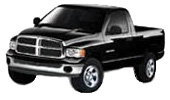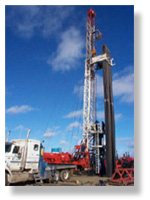As of March 31, 2004: 21,658 loans for $168.1 million Questions and Answers... 5% Dollar and Energy Saving Loans
|
The Nebraska Energy Quarterly features questions asked about 5% Dollar and Energy Saving Loans.
Loan forms may be obtained from participating lenders, the Nebraska Energy
Office, or the agency's web site by clicking on the “Loan Forms”
button above.
|
Q:
| Are loans available for roof and foundation repairs? |
A:
Roof
repair or replacement can be part of an attic or ceiling insulation project,
provided the borrower is adding an additional R-30 insulation value to the
ceiling or attic and the roof needs to be repaired or replaced to protect
the new insulation because the roof leaks.
|
Q:
Are there other
funding sources for energy conservation projects besides Dollar and Energy
Saving Loans?
|
A:
Depending on the type
of applicant, there may be funding opportunities through local Community
Development Block Grant Programs administered by cities, counties, and development
districts. Other sources could be the USDA Rural Development or other agencies
such as the Library Commission or the Historical Society. In addition, local
utilities may have rebates available. More than 40 different financing options
are listed in 40 Ways to Finance Your Improvements 40ways.htm">40ways.htm
|
Q:
Can
drilling a new well be covered by a Dollar and Energy Saving Loan?
|
A:
|
| Q:
I am interested
in building a wind farm in Nebraska. Can I get a Dollar and Energy Saving
Loan for the project?
| Getting a loan for a wind farm in Nebraska would have to be done by an eligible borrower; be located in Nebraska; demonstrate through a technical audit that it would provide sufficient energy dollar savings in the operation to qualify the project; and be limited by the dollar amount for that loan sector. These requirements are the same for any type of renewable energy project. Residency requirements for borrowers, payback criteria and loan sector limits can be found on the Energy Office's web site or by requesting a loan brochure from the Energy Office. Typically borrowers need to be a Nebraska resident or entity. Loan limits range from $35,000 for a single family dwelling up to $175,000 for a political subdivision. The payback criteria are 10 years for system improvements and 15 years for building improvements. For renewable energy projects such as a wind farm, forms 32 loan/pdf/form32.pdf">loan/pdf/form32.pdf and 33 loan/pdf/form33.pdf">loan/pdf/form33.pdf should be used for submitting an energy audit for the Energy Office's review. | Q:
Are 5% Dollar
and Energy Saving Loans available for the purchase of dual fuel vehicles
that are now being manufactured?
| A:
|
 E-85 ethanol fueled vehicles save on fuel costs and improve air quality.
Loans
are available for the incremental cost of a dual fuel vehicle. This would
be the difference in the cost of the vehicle versus the cost of the same
vehicle without alternate fuel capability. These types of loans can be made
for a term of three years. The full cost of a vehicle is eligible for a
loan only if it is a dedicated — 100% ethanol, bio-diesel, propane,
natural gas or electric — alternate fuel vehicle. These types of loans
can be made for a term of 5 years if the vehicle is under 8,500 lbs. gross
vehicle weight, and for a term of seven years if over that weight. The loans
cannot retroactively fund the purchase of an eligible vehicle. Form 7 is the application form used for alternate fueled vehicle projects loan/pdf/form7.pdf">loan/pdf/form7.pdf
E-85 ethanol fueled vehicles save on fuel costs and improve air quality.
Loans
are available for the incremental cost of a dual fuel vehicle. This would
be the difference in the cost of the vehicle versus the cost of the same
vehicle without alternate fuel capability. These types of loans can be made
for a term of three years. The full cost of a vehicle is eligible for a
loan only if it is a dedicated — 100% ethanol, bio-diesel, propane,
natural gas or electric — alternate fuel vehicle. These types of loans
can be made for a term of 5 years if the vehicle is under 8,500 lbs. gross
vehicle weight, and for a term of seven years if over that weight. The loans
cannot retroactively fund the purchase of an eligible vehicle. Form 7 is the application form used for alternate fueled vehicle projects loan/pdf/form7.pdf">loan/pdf/form7.pdf
| Q:
How can information be obtained on Dollar and Energy Saving Loans?
| A:
Brochures and application forms can be requested from the Energy Office or can be viewed and downloaded from the agency's web site loan/index.html
">Home
Energy
Loans
Energy Statistics
mailto:energy1%40mail%2estate%2ene%2eus"> |
 Roof repairs are eligible in some cases.
Roof repairs are eligible in some cases. Well drilling rig.
Well drilling rig.